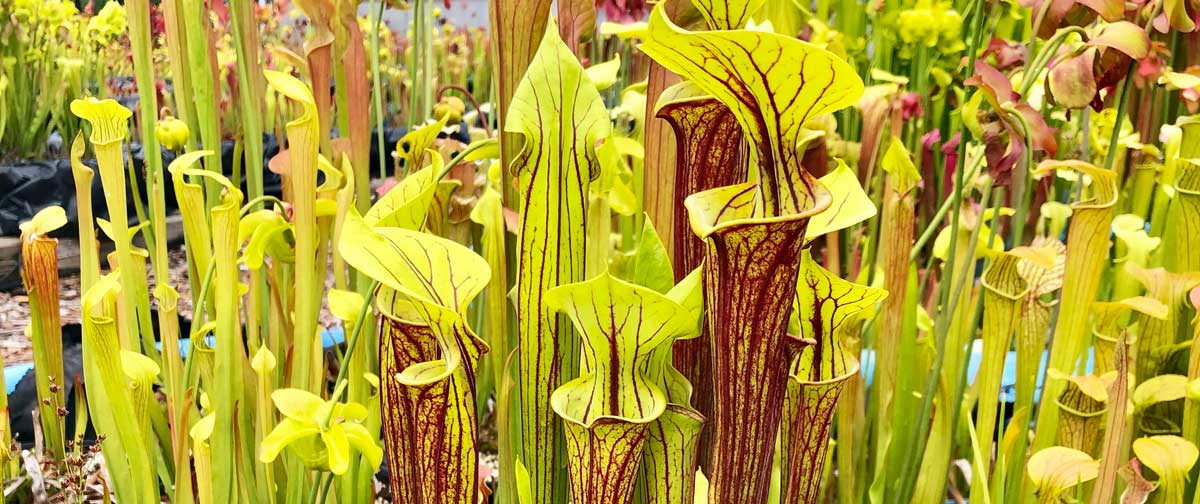Last Updated on June 17, 2024 by Dog Lover
Carnivorous Plants: The Fascinating World of Meat-Eating Plants
What Are Carnivorous Plants?
Carnivorous plants are a unique group of plants that obtain essential nutrients by capturing and digesting insects, small animals, and even other plants. These plants have evolved to thrive in environments where the soil lacks essential nutrients, such as nitrogen, phosphorus, and potassium.
They have developed specialized structures and mechanisms to capture and digest prey, allowing them to survive and even thrive in these nutrient-poor environments.

Types of Carnivorous Plants
There are several types of carnivorous plants, each with its unique characteristics and methods of capturing prey. Some of the most well-known types include:
Venus Flytrap (Dionaea muscipula)
The Venus flytrap is one of the most iconic carnivorous plants. It has modified leaves that can snap shut quickly to capture prey. The leaves are covered in tiny hairs that trigger the trap when an insect lands on them.
The plant then digests the insect using enzymes and absorbs the nutrients.
Pitcher Plant (Nepenthes spp.)
Pitcher plants are known for their deep, cup-shaped leaves that trap insects. The leaves are covered in slippery surfaces and have a sweet, sticky substance that attracts prey.
Once an insect falls into the pitcher, it cannot climb out and is eventually digested by the plant.
Sundew (Drosera spp.)
Sundews are small, carnivorous plants that use sticky droplets of glue-like substance to capture prey. The droplets are produced on the leaves and stems of the plant, and when an insect lands on them, it becomes stuck.
The plant then digests the insect using enzymes.
How Do Carnivorous Plants Capture Prey?
Carnivorous plants have evolved a range of mechanisms to capture prey. Some of the most common methods include:
Snap Traps
Snap traps are used by plants like the Venus flytrap. These traps are triggered by the movement of an insect, causing the leaves to snap shut quickly.
Glue Traps
Glue traps are used by plants like sundews. These traps are sticky and attract prey, making it difficult for them to escape.
Slippery Traps
Slippery traps are used by plants like pitcher plants. These traps are covered in a slippery surface that makes it difficult for prey to climb out.
Why Do Carnivorous Plants Exist?
Carnivorous plants exist because they have evolved to thrive in environments where the soil lacks essential nutrients.
These plants have developed specialized structures and mechanisms to capture and digest prey, allowing them to survive and even thrive in these environments.

Carnivorous Plants in the Wild
Carnivorous plants can be found in a variety of environments around the world. Some of the most common habitats include:
Bogs and Fens
Bogs and fens are wetland environments that are characterized by acidic, nutrient-poor soil. These environments are ideal for carnivorous plants, which can thrive in the absence of essential nutrients.
Swamps and Marshes
Swamps and marshes are wetland environments that are characterized by nutrient-poor soil. These environments are also ideal for carnivorous plants, which can thrive in the absence of essential nutrients.
Deserts
Deserts are dry, nutrient-poor environments that are ideal for carnivorous plants. These plants have evolved to survive in these environments by capturing and digesting prey.
Carnivorous Plants in Cultivation
Carnivorous plants can be grown in cultivation, providing they are given the right conditions. Some of the most important conditions include:
Nutrient-Poor Soil
Carnivorous plants require nutrient-poor soil to thrive. This can be achieved by using a specialized potting mix that lacks essential nutrients.
High Humidity
Carnivorous plants require high humidity to thrive. This can be achieved by placing the plant in a terrarium or greenhouse.
Bright Light
Carnivorous plants require bright light to thrive. This can be achieved by placing the plant in a sunny location or using grow lights.

Conclusion
Carnivorous plants are a fascinating group of plants that have evolved to thrive in environments where the soil lacks essential nutrients. They have developed specialized structures and mechanisms to capture and digest prey, allowing them to survive and even thrive in these environments.
Whether in the wild or in cultivation, carnivorous plants are a unique and captivating group of plants that continue to fascinate and inspire.
FAQs
What are the most common types of carnivorous plants?
The most common types of carnivorous plants include Venus flytraps, pitcher plants, and sundews.
How do carnivorous plants capture prey?
Carnivorous plants capture prey using a range of mechanisms, including snap traps, glue traps, and slippery traps.
Why do carnivorous plants exist?
Carnivorous plants exist because they have evolved to thrive in environments where the soil lacks essential nutrients.
Where can carnivorous plants be found in the wild?
Carnivorous plants can be found in a variety of environments around the world, including bogs and fens, swamps and marshes, and deserts.
How can carnivorous plants be grown in cultivation?
Carnivorous plants can be grown in cultivation by providing them with nutrient-poor soil, high humidity, and bright light.
Are carnivorous plants rare?
Carnivorous plants are not rare, but they are often found in specific environments and require specialized conditions to thrive.
Reference Links:
Wikipedia: List of Carnivorous Plants







